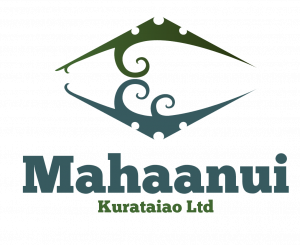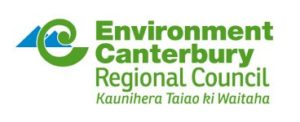5.1 Kaitiakitanga
Wāhi Tuarima | Part 5
Ngā Take ā-rohe Me Ngā Kaupapa | Regional Issues and Policy
5.1 Kaitiakitanga [K]
“The responsibility of kaitiakitanga comes from whakapapa.”
Peter Ramsden, Te Rūnanga o Koukourārata
Kaitiakitanga is fundamental to the relationship between Ngāi Tahu and the environment. It is the intergenerational responsibility and right of tāngata whenua to take care of the environment and resources upon which we depend. The responsibility of kaitiakitanga is twofold: first, there is the ultimate aim of protecting mauri; and second, there is the duty to pass the environment to future generations in a state that is as good as, or better than, the current state.
Te Tiriti o Waitangi guarantees tāngata whenua the right to fulfill their kaitiaki obligations to protect and care for taonga in the environment, including land, waterways, natural features, wāhi tapu and flora and fauna with tribal areas. However, there are important questions about the ability of current laws and policies to support these kaitiaki relationships to the degree required by the Treaty.
The Mahaanui IMP is a written expression of kaitiakitanga, setting out how to achieve the protection of natural and physical resources according to Ngāi Tahu values, knowledge and practices. As a tāngata whenua planning document with the mandate of six Canterbury Papatipu Rūnanga, the IMP is the basis for working with local authorities and other agencies to achieve sustainable management, mō tātou, ā, mō kā uri ā muri ake nei.
"As an inherited responsibility it is not something I can disregard, there is not an ‘opt out clause’. While to some this may seem like a burden, I am passionate to ensure that our taonga and other natural resources are passed on in as good a state, if not better, to the generations that follow, and that our care and endeavours today respect the beliefs, practices and the intentions of our Tīpuna." (1)
“The exercise of kaitiaki relationships with taonga in the environment is [therefore] vital to the continued expression of Māori culture itself.” (2)
Ngā Paetae | Objectives
(1) Te Tiriti o Waitangi is recognised as the foundation of the relationship between Ngāi Tahu and local government.
(2) Papatipu Rūnanga are able to fulfill their role and responsibility as kaitiaki within management and decision making processes.
(3) Mahaanui Kurataiao Ltd is a well performing and innovative resource management consultancy working on behalf of Papatipu Rūnanga to protect and enhance Ngāi Tahu values.
(4) The Mahaanui IMP 2013 is embraced and implemented as a manawhenua planning document for the six Papatipu Rūnanga across Ngā Pākihi Whakatekateka o Waitaha and Te Pātaka o Rākaihautū.
(5) The capacity of Papatipu Rūnanga to participate in natural resource management policy and planning processes is increased.
(6) Ngāi Tahu is able to lead the way and set an example on the landscape with regard to best practice and sustainable cultural, environmental, economic, and social outcomes.
Ngā Take | Issues of Significance
- K1: Recognition of Manawhenua
- K2: Te Triti o Waitangi
- K3: Effective recognition of kaitiakitanga
- K4: Collaboration
- K5: Leading the way
- K6: Capacity building
K1: Recognition of Manawhenua
Issue K1: The need to recognise manawhenua, and therefore engage with the appropriate Papatipu Rūnanga.
Ngā Kaupapa / Policy
K1.1 Ngāi Tahu are the tāngata whenua who hold manawhenua across Ngā Pākihi Whakatekateka o Waitaha and Te Pātaka o Rākaihautū.
K1.2 Te Rūnanga o Ngāi Tahu is the tribal authority representing the collective of Ngāi Tahu whānui as per the Te Rūnanga o Ngāi Tahu Act 1996 and Ngāi Tahu Claims Settlement Act 1998.
K1.3 Papatipu Rūnanga are the regional collective bodies representing the tāngata whenua who hold manawhenua, and are responsible for protecting hapū and tribal interests in their respective takiwā.
K1.4 For resource management issues in particular catchments or geographical areas set out in Part 6 of this IMP, engagement must occur with the appropriate Papatipu Rūnanga, as per the takiwā boundaries set out in:
(a) the Te Rūnanga o Ngāi Tahu (Declaration of Membership Act) Order 2001.
K1.5 There are numbers of areas of within Ngā Pākihi Whakatekateka o Waitaha.
K1.6 The northern and southern limits of the takiwā covered by the Mahaanui IMP are areas of shared interest with neighboring Papatipu Rūnanga. The Hurunui River is an area of shared interest with Te Rūnanga o Kaikōura, and the Rakaia and Hakatere rivers are areas of shared interest with Te Rūnanga o Arowhenua.
K1.7 Mahaanui Kurataiao Ltd is the Manawhenua Environmental Consultancy owned by Ngāi Tūāhuriri Rūnanga, Te Hapū o Ngāti Wheke (Rāpaki), Ōnuku Rūnanga, Koukourārata Rūnanga, Wairewa Rūnanga and Te Taumutu Rūnanga, and is mandated to engage in resource and environmental management processes on behalf of the six Papatipu Rūnanga.
He Kupu Whakamāhukihuki / Explanation
The importance of engaging with the appropriate Papatipu Rūnanga on resource management matters is an issue of significance for tāngata whenua. While the Mahaanui IMP is a collective plan, it does not replace the need to work with the tāngata whenua who hold manawhenua on issues within their individual takiwā. Manawhenua is determined by whakapapa, and confers traditional customary authority over an area. Once acquired, manawhenua is secured and maintained by ahi kā, or continued occupation and resource use.
Each Papatipu Rūnanga has their own respective takiwā, and each is responsible for protecting the tribal interests in their respective takiwā, not only on their own behalf of their own hapū, but again on behalf of the entire tribe. The Te Rūnanga o Ngāi Tahu Act 1996 and the NTCSA 1998 give recognition to the status of Papatipu Rūnanga as kaitiaki and manawhenua of the natural resources within their takiwā boundaries.
The Te Rūnanga o Ngāi Tahu (Declaration of Membership Act) Order 2001 sets out the takiwā boundaries of the six Papatipu Rūnanga preparing this IMP. Further information on the traditional takiwā of each of the six hapū is found in Part 3 of this plan (Manawhenua).
K2: Te Tiriti o Waitangi
Issue K2: Recognition of Te Tiriti o Waitangi as the basis for the relationship between Ngāi Tahu and local government
Ngā Kaupapa / Policy
K2.1 Te Tiriti o Waitangi is an agreement between Ngāi Tahu and the Crown, but Treaty obligations lie with local government as well as central government agencies.
K2.2 The articles of Te Tiriti o Waitangi should be given effect to in accordance with the significance of the treaty to Māori as the founding document of the nation.
K2.3 In giving effect to Te Tiriti, government agencies and local authorities must recognise and provide for kaitiakitanga and rangatiratanga. As the tāngata whenua who hold manawhenua, Ngāi Tahu interests in resource management extend beyond stakeholder or community interests.
K2.4 The articles and principles of the Te Tiriti are the underlying mutual obligations and responsibilities that the Treaty places on both Ngāi Tahu and government agencies and local authorities, and reflect the intention of the Treaty as a whole.
He Kupu Whakamāhukihuki / Explanation
Te Tiriti o Waitangi (the Treaty of Waitangi) was signed by Ngāi Tahu rangatira in 1840 at Akaroa (May 30), Ruapuke Island (June 9, 10) and Ōtākou (June 13), marking the beginning of what is today recognised as a partnership between the iwi and the Crown.
Ngāi Tahu signed the Treaty document written in Māori, as did the majority of other Māori rangatira signatories. This granted ‘te kawanatanga katoa’ (governorship of their lands) to the Queen (Article One), guaranteed ‘te tino rangatiratanga’ (the unqualified exercise of chieftainship) of Māori over their lands, settlements and taonga (Article Two), and promised equity for Māori and European settlers (Article Three), and peace for all.
Only 39 rangatira (of over 500) signed the second English version of the document. Differences between the two texts contributed to different understandings of Te Tiriti, and to a debate over interpretation that has continued from 1840 to the present. The legacy of post-Treaty land sales and confiscation and the loss of access to resources (and the ability to manage those resources for sustenance and economic purposes), is an underlying driver of the issues and policy in this IMP.
"… the Treaty is always speaking, and it becomes not less but more significant as we go into the future."
Te Whakatau 1990:4-2
The RMA 1991 requires all persons exercising functions under that act to take into account the principles of the Treaty of Waitangi. The Local Government Act 2002 requires local authorities to provide opportunities for Māori to participate in decision-making processes in recognition of the Crown’s responsibility to take appropriate account of the principles of the Treaty. The Conservation Act 1987 must be interpreted and administered as to give effect to the principles of the Treaty. Other legislation such as the Hazardous Substances and New Organisms Act 1996, Historic Places Act 1993 and Ngāi Tahu Settlement Act 1998 also place responsibilities on local authorities to recognise the Treaty.
In Canterbury, there are differences in the way that the various local authorities have responded to their Treaty responsibilities, and in their approach to relationships with Ngāi Tahu. The degree of Ngāi Tahu participation in regional planning and decision-making processes can vary considerably between the six rūnanga, five councils, and the many council and government departments.
The lack of understanding of Treaty issues, and inadequate policy and processes within government agencies and local authorities to address Treaty obligations, are key issues identified by Papatipu Rūnanga. The very fact that the RMA instructs decision makers to ‘take into account’ the Treaty, rather than ‘recognise and provide for’, or ‘give effect to’, illustrates the sometimes peripheral status of Te Tiriti. For the Papatipu Rūnanga preparing this IMP, it is not sufficient to ‘take into account’ the principles of the Treaty of Waitangi. Rather, the Treaty should define the relationship between Ngāi Tahu and the Crown, and also local government. It is through giving effect to the Treaty that local government can recognise and provide for the relationship of Ngāi Tahu with natural resources (RMA s. 6 (e)) as a matter of regional importance, and that manawhenua can fully exercise kaitiakitanga rights and responsibilities.
The Treaty provides a basis for working together and protection for things important to Ngāi Tahu, o ratou taonga katoa. It acknowledges the interests of Ngāi Tahu in achieving the sustainable management of natural resources in the region, and provides a framework for working together in good faith and partnership.
K3: Effective Recognition of Kaitiatikanga
Issue K3: Effective recognition of kaitiakitanga in natural resource management and governance processes.
Ngā Kaupapa / Policy
K3.1 Local authorities should ensure that they have the institutional capability to appropriately recognise and provide for the principle of kaitiakitanga.
K3.2 Elected or appointed members (councillors or commissioners) and senior management must provide leadership and support for their staff regarding engagement with Ngāi Tahu.
K3.3 To require that local authorities engage with Papatipu Rūnanga in the spirit of Te Tiriti o Waitangi and the purpose and principles of the RMA. This includes, but is not limited to:
(a) Establishment of robust processes to facilitate engagement with Ngāi Tahu, at operational and political levels;
(b) Increased kaitiaki control, partnership or influence over taonga (i.e. species or places) of value to Ngāi Tahu culture and identity, including joint or co-management, or the transfer of powers, duties and/or functions to Ngāi Tahu;
(c) Implementation of Iwi Management Plans, in territorial and regional planning processes;
(d) Involvement of Ngāi Tahu in the ‘front end’ of the planning process for plan and policy statement development and review;
(e) Appointment of Ngāi Tahu commissioners on hearings panels and planning committees;
(f) Ensuring that resource consent applications identify and assess effects on Ngāi Tahu cultural values;
(g) Recognition that tāngata whenua interests are greater than that of an affected party; and
(h) Recognition of Ngāi Tahu developed planning tools as mainstream techniques for monitoring and assessing the state of the environment (e.g. State of Takiwā Monitoring; COMAR).
K3.4 To require that Mahaanui IMP 2013 is recognised and implemented as a collective and mandated manawhenua planning document.
He Kupu Whakamāhukihuki / Explanation
Section 7 (a) of the RMA 1991 requires decision makers to have particular regard to kaitiakitanga. For tāngata whenua this means working together in the spirit of partnership. Partnership extends beyond consultation: it requires the meaningful engagement of tāngata whenua in decision making processes and the achievement of outcomes that reflect tāngata whenua contributions to those processes and are aligned with Ngāi Tahu values and interests.
The Waitangi Tribunal’s recent report on the Wai 262 claim presents key findings on kaitiakitanga and the RMA 1991. Ko Aotearoa Tēnei: A Report into Claims Concerning New Zealand Law and Policy Affecting Māori Culture and Identity (2011) concludes that current resource management laws and policy do not support kaitiaki relationships to the degree required by the Treaty. The report identifies the opportunity for reform to both strengthen Māori culture and identity, and also add greater depth to environmental decision making through the meaningful recognition of Māori knowledge and values. The report also identifies the need to increase the recognition and weighting of IMP in local government processes (See Implementing this IMP).
K4: Collaboration
Issue K4: Working together with agencies, communities and people with responsibilities and interests in the protection of natural resources and the environment.
Ngā Kaupapa / Policy
K4.1 To enhance the exercise of kaitiakitanga through establishing relationships and recognising collaborative opportunities with external agencies (e.g. local government, Historic Places Trust, Crown Research Institutes) and the wider community, including but not limited to:
(a) Collaborative management opportunities for areas of particular cultural significance; and
(b) Research partnerships.
He Kupu Whakamāhukihuki / Explanation
The exercise of kaitiakitanga is enhanced through working alongside local government, central government (e.g. Historic Places Trust) and the wider community. As tāngata whenua, Ngāi Tahu can bring the community together under a common kaupapa: a healthy environment as the basis for a healthy community and economy. Te Roto o Wairewa and Te Waihora are examples of where Ngāi Tahu has taken a leadership role to bring stakeholders together to address lake health; building up a network of expertise with people who are willing to work together to rehabilitate these important sites.
"Relationships are really important, and shared management is a good idea."
Elizabeth Cunningham, IMP Working Group hui
K5: Leading the Way
Issue K5: The kaitiaki responsibility of Ngāi Tahu is to set an example of best practice on the landscape.
Ngā Kaupapa / Policy
K5.1 To consistently and effectively set an example of best practice on the landscape in all that we do, at the Papatipu Rūnanga and at the tribal level, culturally and commercially.
K5.2 To support Ngāi Tahu Holdings Group to set the highest possible standard of best practice in their commercial ventures, consistent with Ngāi Tahu values of:
(a) Rangatiratanga - upholding the mana of Ngāi Tahu at all times and in all that they do.
(b) Manaakitanga - creating an environment of respect: to customers, to staff, iwi members and all others.
(c) Whanaungatanga - maintaining important relationships within the organisation, the iwi and the community.
(d) Kaitiakitanga - actively protect the people, environment, knowledge, culture, language and resources important to Ngāi Tahu for future generations.
(e) Tohungatanga - pursue knowledge and ideas that will strengthen and grow Ngāi Tahu and our community.
(f) Manutioriori/Kaikokiri - encourage imaginative and creative leaders that must continually break new ground.
K5.3To require that Ngāi Tahu Holdings Group engage with Papatipu Rūnanga when planning and developing commercial ventures such as residential property developments, rural developments or regional water infrastructure projects, to ensure that these ventures recognise and provide for the rights and interests of manawhenua, and to give effect to the values set out in K5.2 (a) to (f).
He Kupu Whakamāhukihuki / Explanation
One of the unique strengths that Ngāi Tahu can offer is the commitment to long term intergenerational investment in the land, environment and community. Different from many other organisations and businesses, Ngāi Tahu have the ability to set goals based on the cultural well-being of future generations (mō tātou, ā, mō kā uri ā muri ake nei), rather than only financial performance.
Tāngata whenua seek to achieve best practice, “and then one step more”. Whether it is residential property developments, tourism ventures, dairy farms, indigenous biodiversity restoration projects or the construction of a permanent lake opening outlet, tāngata whenua want to see Ngāi Tahu lead the way and imprint the mana of Ngāi Tahu on the landscape by setting an example of environmental, cultural, and economic innovation and sustainability.
“We want Wairewa to be the most influential in decision making for our takiwā. We need to be instrumental and influence the decisions that are going to made in going forward. We want to see Wairewa leading the way.”
Robin Wybrow, Wairewa Rūnanga
K6: Capacity Building
Issue K6: There is a continuing need to build capacity within Papatipu Rūnanga to participate effectively in natural resource management and governance.
Ngā Kaupapa / Policy
K6.1 To continue to build the capacity and capability of Papatipu Rūnanga to engage with local government, contribute to decision making and realise kaitiakitanga objectives and aspirations.
K6.2 To work with Te Rūnanga o Ngāi Tahu to address Papatipu Rūnanga capacity and resourcing issues by:
(a) Identifying training opportunities on RMA 1991 issues; and
(b) Advocating for regular Ngā Rūnanga hui, wānanga, and hīkoi on natural resources;
K6.3 To work with regional, district and city councils to develop appropriate methods and processes to assist tāngata whenua to build capacity to contribute to decision making, consistent with local government obligations under the Local Government Act 2002. This includes:
(a) The provision of meaningful opportunities to contribute to decision making processes;
(b) The provision of training opportunities on RMA 1991 issues; and
(c) Ensuring that tāngata whenua contributions to planning processes are appropriately resourced.
He Kupu Whakamāhukihuki / Explanation
Papatipu Rūnanga are committed to building their capacity to engage with local government to realise kaitiakitanga objectives and aspirations. The formation of the Rūnanga based environmental consultancy is one way that Rūnanga have addressed capacity issues, ensuring that tāngata whenua contributions and advice into local government planning processes is appropriately resourced.
Both Te Rūnanga o Ngāi Tahu and local authorities have a role in building the capacity of Papatipu Rūnanga to effectively participate in natural resource management processes. The Te Rūnanga o Ngāi Tahu Act 1996 recognises the status of Papatipu Rūnanga as kaitiaki of the natural resources within their takiwā. The Local Government Act 2002 requires local government to assist Māori to build capacity to contribute to decision making.
END NOTES / REFERENCES
Waaka-Home, M., on behalf of Te Rūnanga o Ngāi Tahu, 2011. Submitter evidence for the Rakaia Water Conservation Order application by TrustPower Ltd (s.4.15).
Waitangi Tribunal, 2011. Ko Aotearoa Tēnei: A Report into Claims Concerning New Zealand Law and Policy Affecting Māori Culture and Identity, 2011. Wellington.
Goodall, A., 2001. Ngāi Tahu and the Crown: Partnership Promised, In: Cant,G. & Kirkpatrick, R. Rural Canterbury: Celebrating its History. Wellington, Daphne Brasell Associates and Lincoln University Press, pp. 14-15.
As per Ngāi Tahu Values for Ngāi Tahu Holdings Group businesses. http://ngaitahuproperty.co.nz








